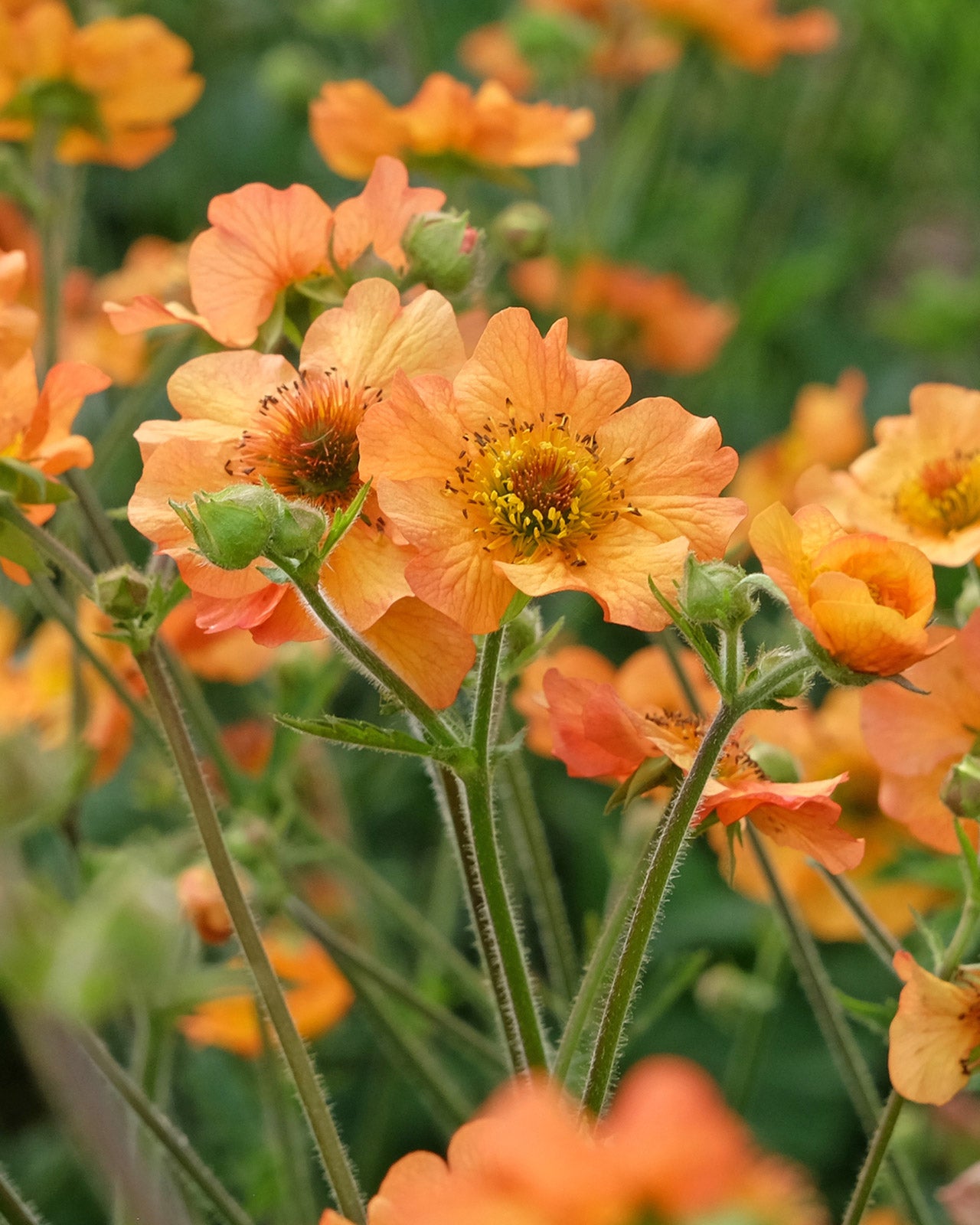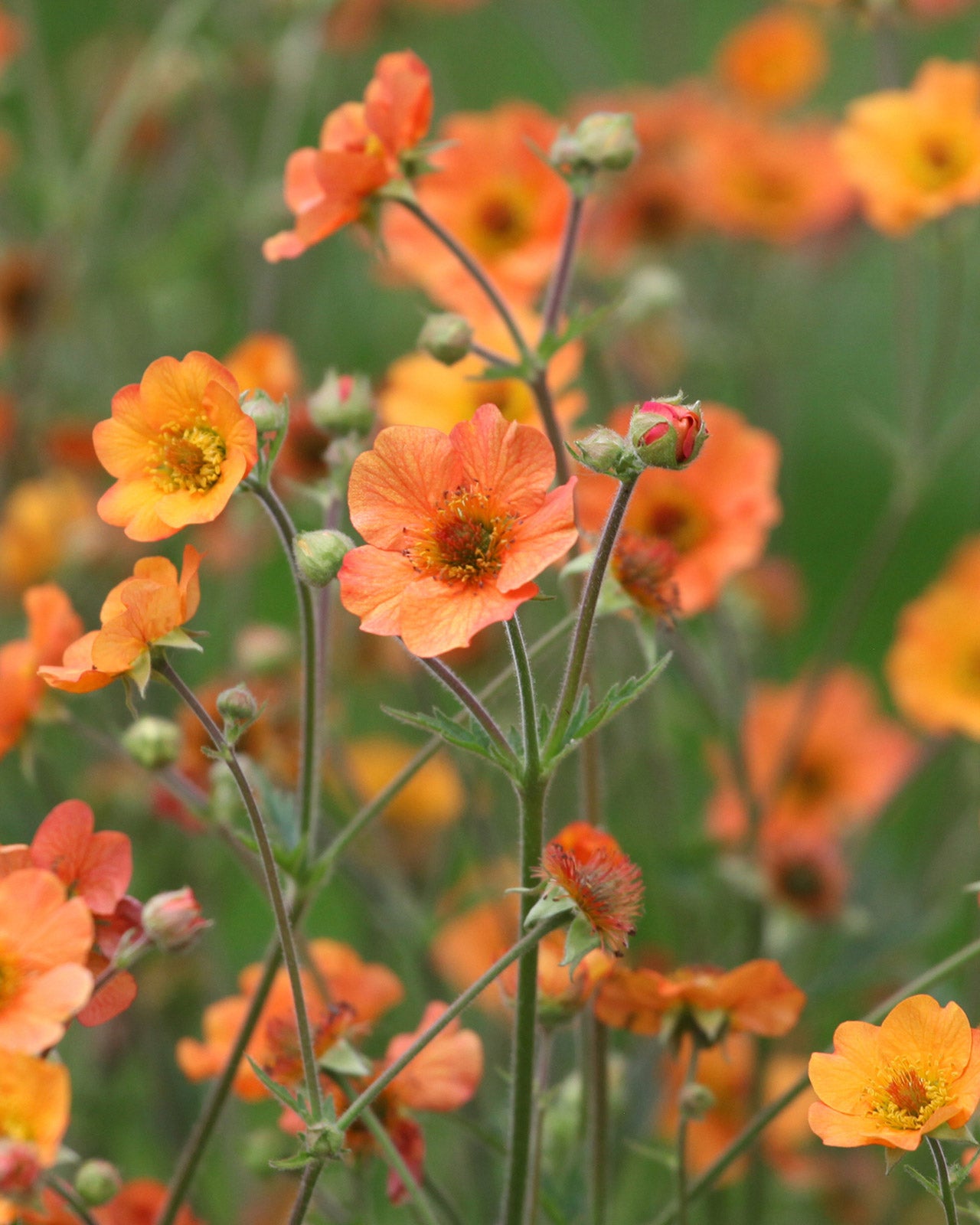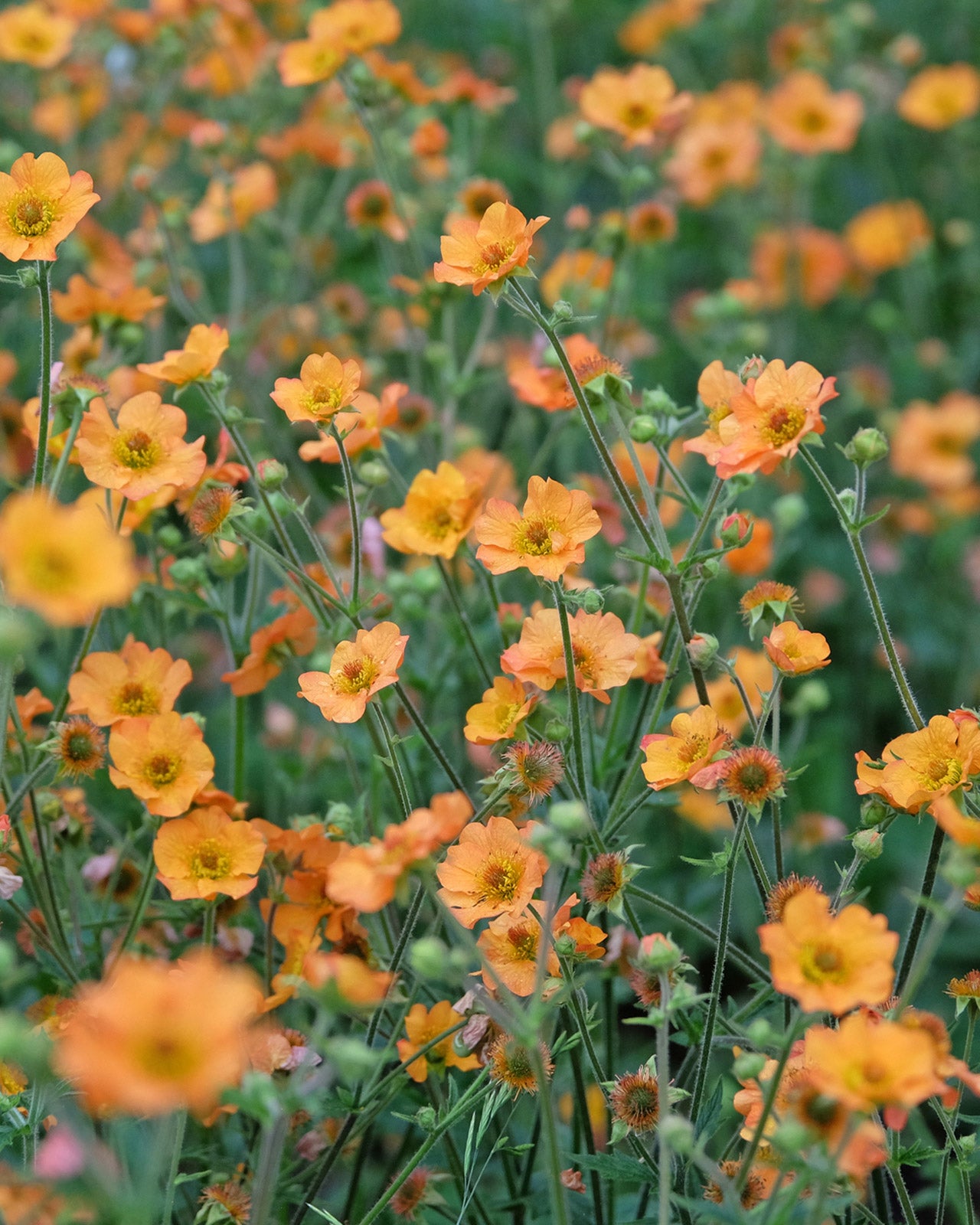


-
Why we like this plant
Geum 'Totally Tangerine' is an excellent choice for gardeners looking for a long-lasting, bright splash of colour. Its upright, airy stems provide a dynamic contrast to lower-growing plants, and its ability to attract pollinators makes it perfect for wildlife gardens. Its easy-going nature and continuous blooms make it a reliable favourite.
-
About this plant
Geum 'Totally Tangerine' is a standout variety known for its profusion of warm, semi-double tangerine flowers held on tall, airy stems. Unlike many geums, this variety blooms continuously from late spring to early autumn, offering a long-lasting splash of colour. Its clump-forming habit and mid-green, slightly hairy foliage provide a strong structural element in borders and cottage gardens. Highly attractive to bees and other pollinators, it is an essential plant for wildlife-friendly gardens. Low-maintenance and adaptable, it thrives in a range of soil conditions and is perfect for adding height and movement to planting schemes.
-
Key features
- Bright tangerine-orange, semi-double flowers
- Exceptionally long flowering period from late spring to autumn
- Elegant, tall stems adding height and movement
- Attracts bees and pollinators
- Ideal for borders, cottage gardens, and wildlife-friendly planting
-

Height and
spread -

Growth
habitTall, clump-forming
-

Moisture
Moderate watering; prefers moist but well-drained soil
-

Position in
the GardenBorders, cottage gardens, wildlife-friendly areas
Planting guide
- Plant in moist but well-drained soil, enriched with organic matter
- Space plants around 40-50cm apart to allow for spreading
- Best planted in spring or autumn for strong establishment
Care tips
- Deadhead regularly to encourage continuous flowering
- Cut back spent foliage after flowering to promote fresh growth
- Water well during dry spells but ensure good drainage
- Apply a balanced fertiliser in spring to enhance blooms
- Divide clumps every 2-3 years to maintain vigour
Winter care
- Fully hardy; requires minimal winter protection
- Foliage may die back in colder regions; cut back in late autumn
- Mulch lightly to protect roots in extreme cold












